Wann sind Kognaten erkennbar? Ähnlichkeit und synchrone Transparenz von Kognatenbeziehungen in der germanischen Interkomprehension
DOI:
https://doi.org/10.13092/lo.46.373Abstract
The possibilities of intercomprehension (= receptive multilingualism within a language family, here restricted to reading comprehension) strongly depend on cognate words and on the transparency of their relationships, which are often obscured by diverging phonological developments in the individual languages. This article presents results of two tests in which German subjects were to find German cognates to words from unknown Germanic languages. The focus of our attention is on the phonological aspect: Does transparency of cognate relations only depend on the number of common segments of the cognate words or also on the kind of phonological differences? If the latter is the case, which kinds of differences do affect recognition, and to what extent? The data from a free response and a multiple choice task indicate that cognate recognition is particularly easy when the correspondence between the differing segments is familiar from variation and alternation phenomena in the L1. More generally, articulatory similarity seems to play an important role for intuitions about possible cognate relationships.Downloads
Download data is not yet available.
Downloads
Published
2011-03-01
Issue
Section
Artikel/Articles
License
Copyright (c) 2011 Robert Möller

This work is licensed under a Creative Commons Attribution 4.0 International License.
How to Cite
Möller, R. (2011). Wann sind Kognaten erkennbar? Ähnlichkeit und synchrone Transparenz von Kognatenbeziehungen in der germanischen Interkomprehension. Linguistik Online, 46(2). https://doi.org/10.13092/lo.46.373


